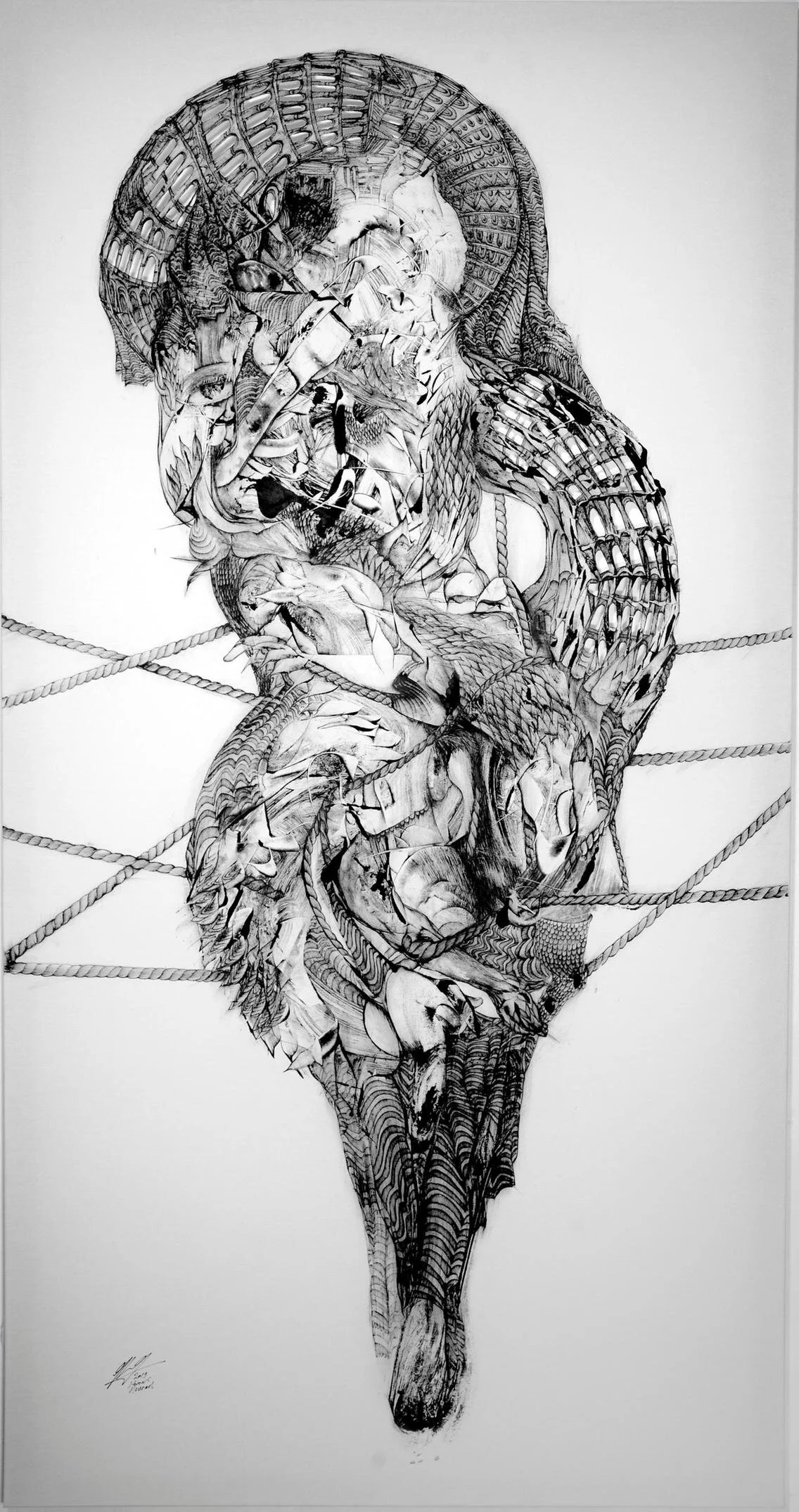“a luscious new multimedia adaptation [that] came alive when the different groupings were woven together, creating a quilt of varied textures. The styles didn’t feel disparate, but rather melded and blurred together in delicious cohesion.”
Invisible Cities
Bharatanatyam choreographer and dancer Ashwini Ramaswamy deepens a choreographic methodology she began in 2019 with Let the Crows Come—named a “Best of the Year'' in The Washington Post and a critic’s pick in The New York Times. Featuring 13 dancers, this reimagining of Italo Calvino’s metaphysical novel interweaves cultural perspectives with a dynamic group of lead artists—Ranee and Aparna Ramaswamy (Bharatanatyam), Berit Ahlgren (Gaga), Alanna Morris (Modern), Joseph Tran (Breaking)—and visual artist, Kevork Mourad, who creates Invisible Cities’ interactive, immersive projections and illustrations in real time.
Invisible Cities extends beyond the kinetic realm with live, interactive projections created by internationally renowned artist Kevork Mourad. Mourad employs his technique of live drawing and animation, developing a collaboration in which art, music and movement harmonize with one another. Both haunting and hopeful, ethereal and full of depth, Mourad’s visual architectures provide a dynamic and unpredictable dimension to the artists’ examination of the way the built environment and human life interact.
Invisible Cities is a generative pilgrimage that expresses a lifelong desire to coalesce Ramaswamy’s specific artistic and cultural aesthetic as a Bharatanatyam artist with the dynamic universe of other embodied traditions and communities. Original choreographic approaches include: the transmuting of Bharatanatyam’s intricate gestural language (hastas/mudras) into full-body movement; creating an unexpected technique of movement modulation by reversing and decelerating Bharatanatyam sequences; utilizing the intricate and unique rhythmic structures of Bharatanatyam to inspire corporeal isolations and patterns; weaving spirituality and narrative elements into the choreographic marrow.
By Kevork Mourad
Invisible Cities is commissioned by The Great Northern Festival, Northrop, and The Cowles Center for Dance and the Performing Arts. This production is made possible in part by funding from the Metropolitan Regional Arts Council, the Marbrook Foundation, National Performance Network (NPN), and the Minnesota State Arts Board. The creation of Invisible Cities is made possible by a residencies at The John Michael Kohler Arts Center and The National Center for Choreography at the University of Akron, OH, which were supported by the McKnight Fellowship Program for Choreography.
